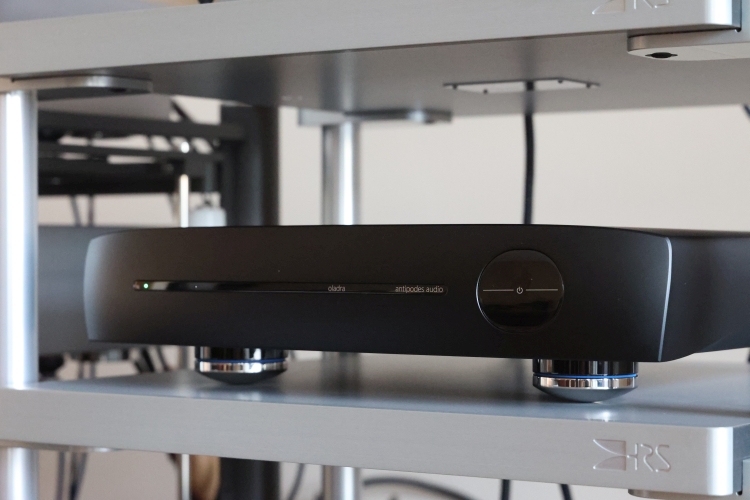
Listening
Sometimes, an update can make a product sound different, offsetting its various sonic parameter such that it improves certain aspects while veering away from some of its original key strengths. Fortunately, this is not what happened with the G4 upgrade for the Oladra.
The latest-spec Oladra still has all the trademark Antipodes characteristics I described in the original review, such as deep tonal saturation, exquisite lushness, liquidity, and beautiful organic flow. It still has its hallmark panavision ultra-wide soundstage, and just as before the update, it is airier, more articulate, more expressive, and more highly resolving than any of the models that preceded it.
So what changed, you ask?
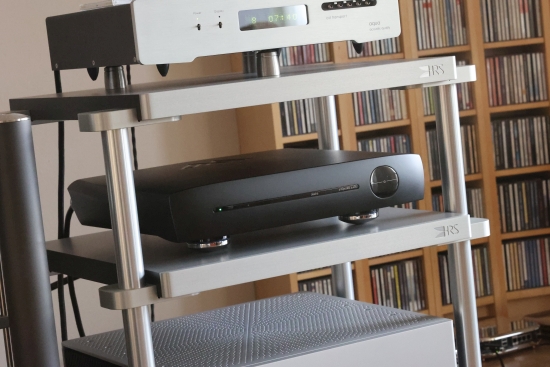
There are two main aspects in which the upgrade improves the sound compared to the original model. First, all the Reclocker outputs sound bolder and more expressive, yet at the same time, they still sound lush and organic and in no way strident, synthetic, or technical.
Second, and this is a big one, the USB output now sounds fantastic! With Antipodes servers, there has always been a large difference in sound between USB and the other outputs. Contrary to what one might expect, USB interfaces are tricky to implement, and to make matters worse, the success of the connection is dependent on the implementation on both ends (in the server and the DAC), and on how they interact. In practice, this can and does lead to large variances in the perceived quality or the subjective musicality of the connection.
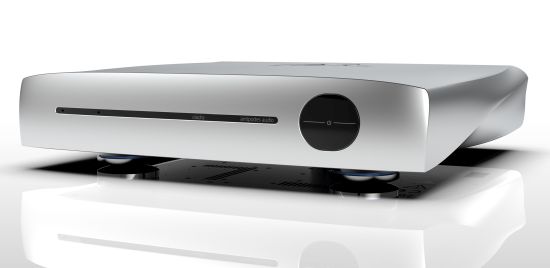
My impression of USB, in general, was eventually consolidated based on comparisons with a wide range of DA Converters, including the Aqua Formula xHD, Aries Cerat Helene, and CH Precision C1.2. This impression is not based solely on Antipodes Music Servers but involves almost every brand out there.
Thus far, I have found that USB tends to sound crisp, articulate, and immediate, but it is also often over-controlled, flat, and technical compared to other output formats. Certainly, the Antipodes Reclocker outputs, with their lush, rich, and relaxed presentation, provide very much the opposite of what I just described, which I feel is a major reason for their success.
With the new USB output, the Oladra presents all the upticks in control, incisiveness, crispness, and expression I have come to know from the format, but this time without sacrificing even an ounce of musicality! How about that?
In fairness, the two output sections still do not sound identical, nor would I expect them to. After the upgrade, USB presents in a more forward manner than AES/EBU, but it is most definitely no longer flat! In fact, I can see some people now preferring this output for its expressive delivery, while other people may prefer the more laidback and lusher delivery of the other outputs. In essence, the Reclocker section presents the music with more richness, lushness, and character, whereas the USB output remains the tightest and most explicit.
I’ve tried various USB cables such as the Mad Scientist Black Magic Gold, Vermouth Reference, and Final Touch Audio Sinope and these led to different sonic perspectives but great results in every case. The Mad Scientist cable maximized the server’s majestic and magical qualities, the Final Touch cable provided the boldest and most robust rendition, and the Vermouth yielded a beautiful balance of virtues in-between these extremes. With these results in mind, I can only conclude that the server’s USB output has become thoroughly dependable. Moreover, I never thought I’d see the day, but I now prefer the USB output to the AES output.
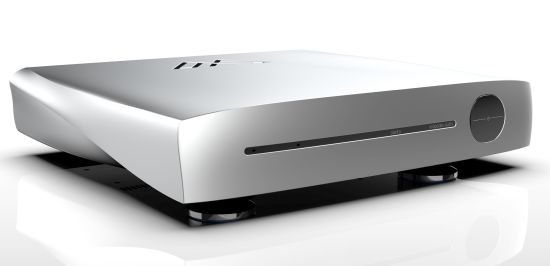
As it stands, I feel that the two output sections are now equally pleasing, leaving a matter of taste, no longer one of musicality versus accuracy. Since no two rooms or systems are the same, it’s great to have these two options to fine-tune the sound for a given installation, but it’s fantastic no longer having to choose between two polar opposites.
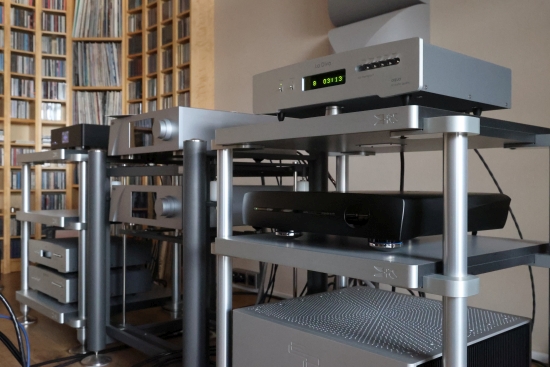
Squeeze and MPD
I know it does not make intuitive sense, but playback formats have their own “house sound”. Roon has a “house” sound, as do MPD and Squeeze. In general, Roon tends to sound sweeter, more fulsome, and more saturated, which many people like because it is pleasant and forgiving. Unfortunately, Roon performance tends to waver under the influence of Roon updates. To my relief, Roon has bounced back since Build 1359 after having sounded dull and uninspiring for a long time. At its best, Roon can sound really great, but at its worst, it can sound like all the life has been sapped out of it. This is where alternative formats can come in handy. For instance, MPD and Squeeze. The former is very similar to UPnP, and in all the cases where I made comparisons, it sounds tighter, leaner, more incisive, and more direct than Roon.
When you want to use MPD, you can control it with any UPnP app, most conveniently Mconnect for iPad or BubbleUPnP for Android. For this format, you must also use a compatible server component, which is preinstalled on Antipodes servers.
A great alternative to MPD is Squeeze, which sounds very similar and is most conveniently controlled using the iPeng app, although there are others. Squeeze can be used in tandem with its server component, available on Antipodes servers, but it can also be used with Roon. In that case, you still use the Roon database, server component, and interface but with a Squeeze endpoint. To use Squeeze with Roon, you need to enable Squeezebox support in the Roon – Setup settings and disable the Squeeze Server in the Antipodes interface. With this setup, the sound is still recognizable as Roon-sourced in terms of smoothness but tighter and faster, and the entire presentation becomes a little bit clearer and direct while retaining all of the organic naturalness.
Conclusion
The G4 Oladra still has all the hallmark Antipodes characteristics I described in the original review, such as deep tonal saturation, natural timbre, seductive lushness, beguiling liquidity, and organic flow. The server has a wholly unforced delivery with huge emotional involvement. The Oladra sets itself apart by being airier, crisper, more articulate, and more highly resolving than any previous model. And rather uniquely, its immense resolution is offered without even a hint of edge or hardness.
There are two key areas in which the G4 upgrade notably improves the sound compared to the original model. First, all the Reclocker outputs sound bolder and more expressive, yet at the same time, still lush and organic and in no way strident, synthetic, or technical. Second, the USB output now sounds fantastic! With the new USB output, the Oladra presents all the upticks in control, incisiveness, crispness, and expression I am familiar with from the format, but this time without sacrificing even an ounce of musicality! This allows users complete freedom to choose the output that best matches their setup, room acoustics, or personal taste.
The original Oladra performed better than any Antipodes server before it. While some of the Oladra technology has recently trickled down into the other models, these latest G4 updates ensure the Oladra comfortably retains its head start.
As the company’s top-tier product, the Oladra is priced rather seriously, but it looks absolutely stunning, offers a wealth of options, and delivers the sonic goods. Especially after the G4 update, the Oladra is still very much an HFA Favorite!

Try out Roon for yourself
External Links
Manufacturer: Antipodes Audio
Antipodes Guides




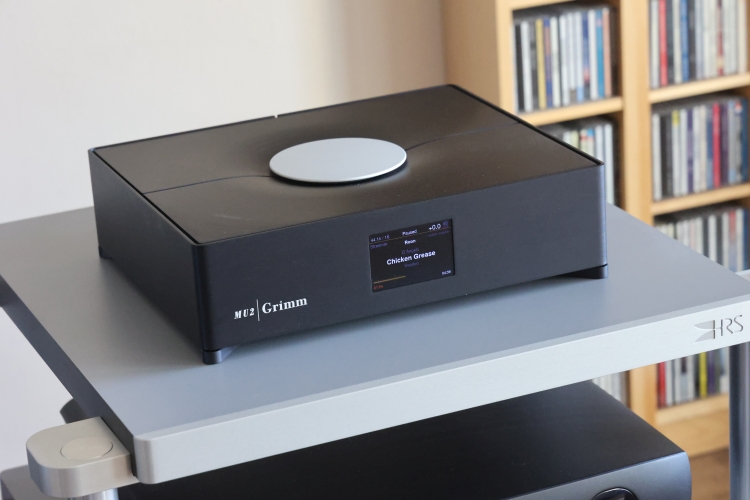
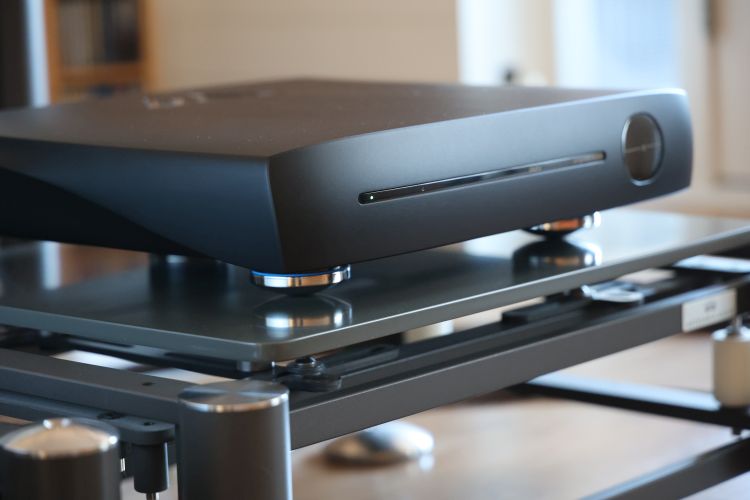
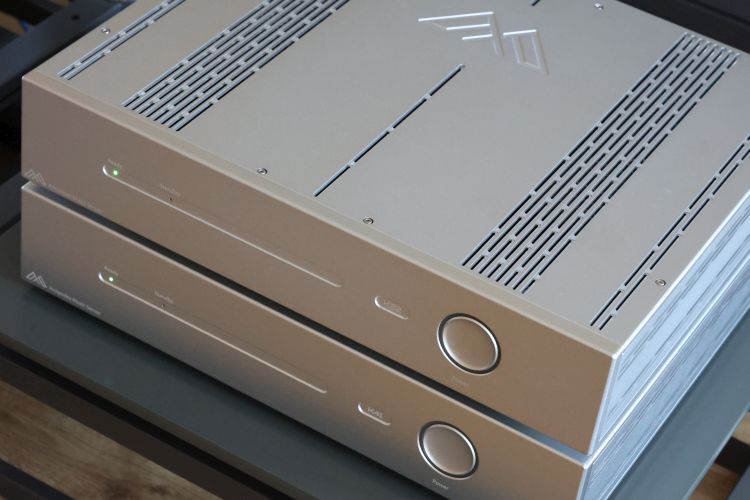
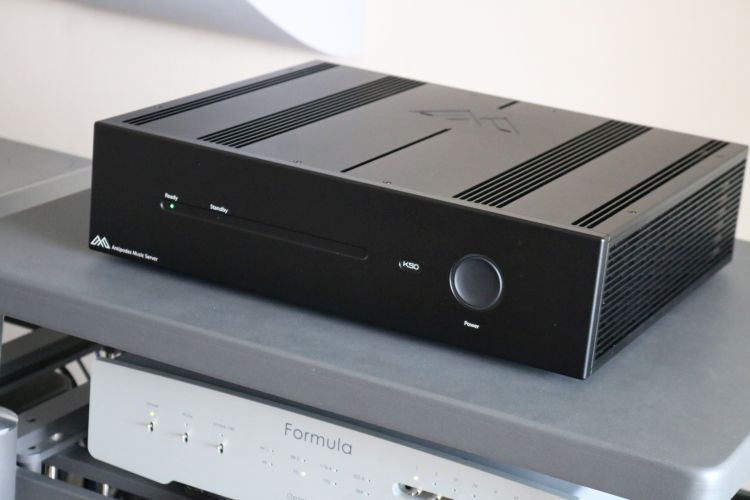
Hi Christiaan,
Great review! To complement your ongoing impressions and varied approaches, I’d like to point out that for the best sound quality (SQ) from the Oladra, you can simply choose “Squeeze (Auto)” in the Solution dashboard, and you’ll be enjoying Squeeze to Squeeze. It’s that simple!
Moreover, you are among the fortunate ones who have had the opportunity to try it out with the latest and greatest Antipodes software, AMSv5. I’m eagerly looking forward to giving that a try myself. It’s worth noting that you’re not alone in this, as Chris (The Computer Audiophile) also seems to prefer compromising on sound quality while listening to an Antipodes (top-of-the-line) server.
(…) It’s intriguing that Chris mentions a Squeeze allergy and seems willing to compromise SQ for a better interface, favoring JPLAY. Neither did Christiaan Punter push it any further in his recent review of the G4 Oladra:
”The Oladra will be listened to mostly using Roon, although I should mention that Antipodes are a big fan of using Squeeze, either with Squeeze Server or as an endpoint combined with Roon”. (…)
(link to AudiophileStyle omitted)
Please read this as a recommendation to achieve the highest level
Hi Paul, Naturally, I am aware that any Antipodes server can be used as a full Squeeze solution. Having reviewed nearly every Antipodes server that existed, I have also tested this in the past. But these days, I feel that Squeeze is a thing of the past, even if it still works very well and can indeed sound very good. And I applaud having compatibility built in so that the server caters to every possible required solution out there. I just don’t really see the point in revisiting this with every successive product from the same brand. I am actually not really willing to compromise on SQ to favor a nice user interface. Although I like the Roon interface a lot, I am actually on the fence about this. Roon SQ wavers and currently sounds very good again. All that said, since I already know what Squeeze and MPD can do and have written about this countless times, and I think that most users will prefer the higher level of sophistication of Roon, I left it at that and made note of both methods so users can decide for themselves.
Dag beste `Christiaan
Hoe verhoud de Oladra zich tot de `k50 en de K41. Dit omdat ik eigenlijk alleen het server gedeelte nodig heb, of presteert de Oladra over de gehele linie beter dan de k41/k50?
Hi Gert-Jan,
The Oladra’s superior sound is most prominent when it is used as an integrated server+player solution. It is still audible when it is used only as a server, but in that case, I would say the benefit is not large enough to justify the extra cost and I would recommend going for the K50 or K41 and use the savings elsewhere in the system. Between K50 and K41, the latter has the same server engine as the K50, and a similar power supply. In my tests (when the unit was still relatively new) it sounded bolder and more impactful than the K50 (which had been in service for years), but mostly when used as an complete solution together with the K22 player. When you only need a server, I would say the difference between K50 and K41 is again not significant enough to recommend the K50 over the K41. In a word: the smooth and full-bodied Antipodes sound is in all their products but it is most prominent in their player components.
Hi Christiaan
Als ik Roon met Squeeze wil gebruiken is de Oladra dan een goede keuze of ben ik dan beter uit met de K41
Met vriendelijke groet
Gert-Jan
Hi GJ,
The servers have the same advantages and relative differences when using Squeeze as when using Roon. The Oladra is their best server and that remains true with Roon, Squeeze, or any other protocol. If you only use the server part, you do lose a significant portion of what makes Antipodes servers special (the playback engine and reclocker outputs), but you will still be able to tell you’re using an Antipodes rather than, say, a standard NAS. The K41 is not better than the Oladra, rather, the other way around. Especially in terms of refinement, air, and resolution, the Oladra is best. But it may be a better choice for you as the remaining differences when using only the server part may not outweigh the extra cost.
Hi Christiaan
Hoe lang ( hoeveel uren ) moet een Antipodes server/speler inspelen voor dat hij op klank is ?.
It depends on the model. Oladra was already pleasant from the first minute but continued to bed in for months, it is now smoother and more relaxed than when I reviewed it. The K50 (with a linear power supply) was a little mechanical at first and developed mostly during the first few weeks, then continued more subtly for many months. I think the same goes for the K41.
Hoi Christiaan
Nu zo wel de K41/K51 en de Oladra goed zijn ingespeeld. Wat is jou totaal inventarisatie/ conclusie van het geheel?.
Hi,
If you think about it this way, comparing the three boxes reveals clear differences in their design. Oladra and K50 are distinct in concept, with Oladra incorporating more recent innovations. The K41, on the other hand, is purely a server and can be customized with a (different brand) player, power cords, and cables according to your preferences.
Oladra stands as the top model, providing exceptional performance with your music files when used as both a server and player. I agree with Christiaan’s view that the Antipodes distinguishable sound quality comes partially from the separation of server and player within the same device.
The only way to truly understand the differences is to listen to all three in your setup and decide based on your experience.
Hope this helps
I completely understand your decision, and I always appreciate your openness and teading here about your past challenges. I’ve had my share of trials as well. As a Squeeze + Squeeze user, I value not only the excellent sound quality but also the optimal performance it brings to Antipodes devices. Despite its less convenient interface, I advocate for a better GUI – perhaps a possibility in the future? Up to now, ROON hasn’t surpassed the SQ of Squeeze, and although it may seem like a thing of the past, I find using it remains the most rewarding for achieving the best listening sessions. It’s reassuring to see that you share a similar awareness. Happy listening!
Hi Paul, Nice feedback:-) Indeed, although Roon has had a big sonic dip until recently and currently sounds great again, it does not sound the same as Squeeze or MPD or UPnP, for that matter. It’s always had a different sonic perspective, even when it was still Sooloos. I most definitely understand why people would opt out of Roon, either for the reassuring comfort of the software never changing, or for the specific sound properties, or both. In the end, the beauty of the Antipodes servers is that all options are on the table! 🙂
Hi Christiaan,
Have you compared the performance of the Oladra (latest revision or otherwise) vs. the Taiko Extreme? Do you have any relevant comparisons between these two units?
All the best,
Matthew
Hi Matthew, Alas, as I work for Taiko Audio, I cannot write about their products as that would mean a conflict of interest.
Dear Sir, you have made an YouTube Video for Grimm Mu 1, where an Update for an infrared Remote Control-Receiver has been Shown. Than you have Showed how to Integrate a Silver infrared Remote Control. I Fall in love with this Silver thing , possibly Metal ir-remotecontrol. WHO is the Manufakturer?And where can i buy it? Kind regards, Mr. Rabe
Hi Mr. Rabe, that was an Audio GD remote control belonging to an Audio GD component. I’m not sure if the handset is available separately from Audio GD but you might be able to find a very similar version via Ali. Later, I utilized an Apple remote control which is nice and minimalistic and also made of aluminum. Do a Google search for “apple ir remote” and you’ll find it.
Hi Mr. Rabe, I just realized it was not an Audio GD but Jay’s Audio remote control.
Dag beste Christian
Ik heb een vraag. Als je de Oladra gebruik in de Roon/squeese configuratie hebben Roon software update’s dan nog invloed op de geluidsweergave ?.
Met vriendelijke groet
Gert-Jan Boer
Hi Gert-Jan, Alas, also when using Roon with Squeeze, the influence of the builds on the sound quality remains audible. It’s the Roon core (the server part) that is the (re)active component in this.
Hi Chtistian
By Builds do you mean the software updates ?so that I don’t misunderstand you?.
yours sincerely
Gert-Jan Boer
Hi Gert-Jan, indeed, with ‘Builds’, I am referring to the software update release versions.
hi Christian
thank you for your illuminating answers. I can do something with it. I wish you a nice Sunday evening and a good new week.
yours sincerely
Gert-Jan
hi Christian
I still have a few questions. The 1st question is, can I limit the consequences of roon software updates by using a Roon Nucleus? The 2nd question is, is there software for the Antipodes Oladra that does not affect the sound reproduction? or is it not there? The 3rd question is, can I undo the negative influence of the Roon software updates by retuning the set? Or should I buy a good CD player?
yours sincerely
Gert-Jan Boer
I have no personal experience with the Nucleus but given that I hear the effects with any Roon hardware, I’d assume the Nucleus would be the same. The impact of Roon server is heard as long as it is active on the network. However, the Oladra, like any Antipodes server, can run a range of server/player solutions. When using UPnP or Squeeze and not having Roon server running, there is no more impact. Regarding “negative” influences… this is a subjective matter. The sound of the software just wavers with the updates, and Roon has a certain character, just like all playback software. Whether or not you like the sound of Roon is a personal matter.
hi Christian
If I understand correctly, what you send in on one side of the player comes out on the other side. is this reasoning correct?
yours sincerely
Gert-Jan